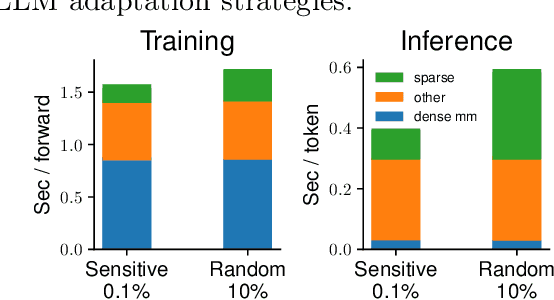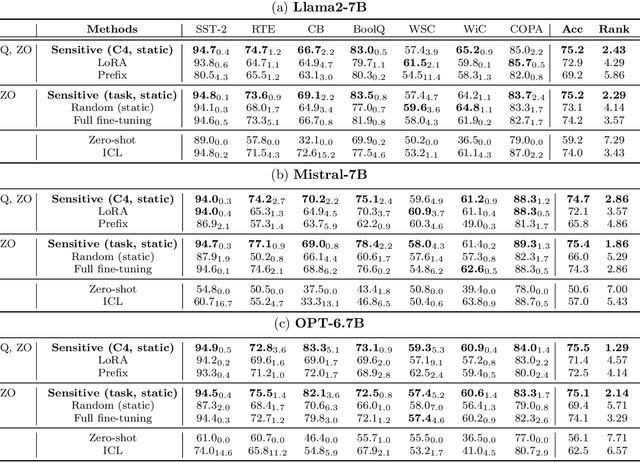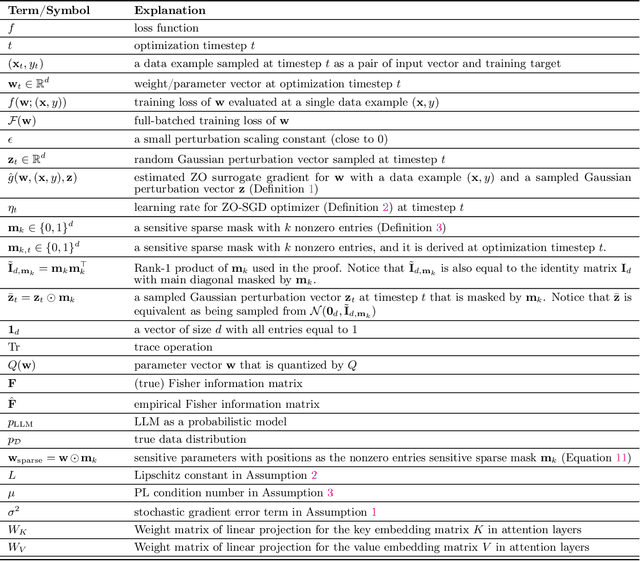Jacob R. Gardner
Nearly Dimension-Independent Convergence of Mean-Field Black-Box Variational Inference
May 27, 2025Abstract:We prove that, given a mean-field location-scale variational family, black-box variational inference (BBVI) with the reparametrization gradient converges at an almost dimension-independent rate. Specifically, for strongly log-concave and log-smooth targets, the number of iterations for BBVI with a sub-Gaussian family to achieve an objective $\epsilon$-close to the global optimum is $\mathrm{O}(\log d)$, which improves over the $\mathrm{O}(d)$ dependence of full-rank location-scale families. For heavy-tailed families, we provide a weaker $\mathrm{O}(d^{2/k})$ dimension dependence, where $k$ is the number of finite moments. Additionally, if the Hessian of the target log-density is constant, the complexity is free of any explicit dimension dependence. We also prove that our bound on the gradient variance, which is key to our result, cannot be improved using only spectral bounds on the Hessian of the target log-density.
Tuning Sequential Monte Carlo Samplers via Greedy Incremental Divergence Minimization
Mar 19, 2025Abstract:The performance of sequential Monte Carlo (SMC) samplers heavily depends on the tuning of the Markov kernels used in the path proposal. For SMC samplers with unadjusted Markov kernels, standard tuning objectives, such as the Metropolis-Hastings acceptance rate or the expected-squared jump distance, are no longer applicable. While stochastic gradient-based end-to-end optimization has been explored for tuning SMC samplers, they often incur excessive training costs, even for tuning just the kernel step sizes. In this work, we propose a general adaptation framework for tuning the Markov kernels in SMC samplers by minimizing the incremental Kullback-Leibler (KL) divergence between the proposal and target paths. For step size tuning, we provide a gradient- and tuning-free algorithm that is generally applicable for kernels such as Langevin Monte Carlo (LMC). We further demonstrate the utility of our approach by providing a tailored scheme for tuning \textit{kinetic} LMC used in SMC samplers. Our implementations are able to obtain a full \textit{schedule} of tuned parameters at the cost of a few vanilla SMC runs, which is a fraction of gradient-based approaches.
Large Scale Multi-Task Bayesian Optimization with Large Language Models
Mar 11, 2025Abstract:In multi-task Bayesian optimization, the goal is to leverage experience from optimizing existing tasks to improve the efficiency of optimizing new ones. While approaches using multi-task Gaussian processes or deep kernel transfer exist, the performance improvement is marginal when scaling to more than a moderate number of tasks. We introduce a novel approach leveraging large language models (LLMs) to learn from, and improve upon, previous optimization trajectories, scaling to approximately 2000 distinct tasks. Specifically, we propose an iterative framework in which an LLM is fine-tuned using the high quality solutions produced by BayesOpt to generate improved initializations that accelerate convergence for future optimization tasks based on previous search trajectories. We evaluate our method on two distinct domains: database query optimization and antimicrobial peptide design. Results demonstrate that our approach creates a positive feedback loop, where the LLM's generated initializations gradually improve, leading to better optimization performance. As this feedback loop continues, we find that the LLM is eventually able to generate solutions to new tasks in just a few shots that are better than the solutions produced by "from scratch" by Bayesian optimization while simultaneously requiring significantly fewer oracle calls.
Covering Multiple Objectives with a Small Set of Solutions Using Bayesian Optimization
Jan 31, 2025Abstract:In multi-objective black-box optimization, the goal is typically to find solutions that optimize a set of T black-box objective functions, $f_1$, ..., $f_T$, simultaneously. Traditional approaches often seek a single Pareto-optimal set that balances trade-offs among all objectives. In this work, we introduce a novel problem setting that departs from this paradigm: finding a smaller set of K solutions, where K < T, that collectively "covers" the T objectives. A set of solutions is defined as "covering" if, for each objective $f_1$, ..., $f_T$, there is at least one good solution. A motivating example for this problem setting occurs in drug design. For example, we may have T pathogens and aim to identify a set of K < T antibiotics such that at least one antibiotic can be used to treat each pathogen. To address this problem, we propose Multi-Objective Coverage Bayesian Optimization (MOCOBO), a principled algorithm designed to efficiently find a covering set. We validate our approach through extensive experiments on challenging high-dimensional tasks, including applications in peptide and molecular design. Experiments demonstrate MOCOBO's ability to find high-performing covering sets of solutions. Additionally, we show that the small sets of K < T solutions found by MOCOBO can match or nearly match the performance of T individually optimized solutions for the same objectives. Our results highlight MOCOBO's potential to tackle complex multi-objective problems in domains where finding at least one high-performing solution for each objective is critical.
Computation-Aware Gaussian Processes: Model Selection And Linear-Time Inference
Nov 01, 2024



Abstract:Model selection in Gaussian processes scales prohibitively with the size of the training dataset, both in time and memory. While many approximations exist, all incur inevitable approximation error. Recent work accounts for this error in the form of computational uncertainty, which enables -- at the cost of quadratic complexity -- an explicit tradeoff between computation and precision. Here we extend this development to model selection, which requires significant enhancements to the existing approach, including linear-time scaling in the size of the dataset. We propose a novel training loss for hyperparameter optimization and demonstrate empirically that the resulting method can outperform SGPR, CGGP and SVGP, state-of-the-art methods for GP model selection, on medium to large-scale datasets. Our experiments show that model selection for computation-aware GPs trained on 1.8 million data points can be done within a few hours on a single GPU. As a result of this work, Gaussian processes can be trained on large-scale datasets without significantly compromising their ability to quantify uncertainty -- a fundamental prerequisite for optimal decision-making.
A Fast, Robust Elliptical Slice Sampling Implementation for Linearly Truncated Multivariate Normal Distributions
Jul 15, 2024Abstract:Elliptical slice sampling, when adapted to linearly truncated multivariate normal distributions, is a rejection-free Markov chain Monte Carlo method. At its core, it requires analytically constructing an ellipse-polytope intersection. The main novelty of this paper is an algorithm that computes this intersection in $\mathcal{O}(m \log m)$ time, where $m$ is the number of linear inequality constraints representing the polytope. We show that an implementation based on this algorithm enhances numerical stability, speeds up running time, and is easy to parallelize for launching multiple Markov chains.
Approximation-Aware Bayesian Optimization
Jun 06, 2024Abstract:High-dimensional Bayesian optimization (BO) tasks such as molecular design often require 10,000 function evaluations before obtaining meaningful results. While methods like sparse variational Gaussian processes (SVGPs) reduce computational requirements in these settings, the underlying approximations result in suboptimal data acquisitions that slow the progress of optimization. In this paper we modify SVGPs to better align with the goals of BO: targeting informed data acquisition rather than global posterior fidelity. Using the framework of utility-calibrated variational inference, we unify GP approximation and data acquisition into a joint optimization problem, thereby ensuring optimal decisions under a limited computational budget. Our approach can be used with any decision-theoretic acquisition function and is compatible with trust region methods like TuRBO. We derive efficient joint objectives for the expected improvement and knowledge gradient acquisition functions in both the standard and batch BO settings. Our approach outperforms standard SVGPs on high-dimensional benchmark tasks in control and molecular design.
Zeroth-Order Fine-Tuning of LLMs with Extreme Sparsity
Jun 05, 2024



Abstract:Zeroth-order optimization (ZO) is a memory-efficient strategy for fine-tuning Large Language Models using only forward passes. However, the application of ZO fine-tuning in memory-constrained settings such as mobile phones and laptops is still challenging since full precision forward passes are infeasible. In this study, we address this limitation by integrating sparsity and quantization into ZO fine-tuning of LLMs. Specifically, we investigate the feasibility of fine-tuning an extremely small subset of LLM parameters using ZO. This approach allows the majority of un-tuned parameters to be quantized to accommodate the constraint of limited device memory. Our findings reveal that the pre-training process can identify a set of "sensitive parameters" that can guide the ZO fine-tuning of LLMs on downstream tasks. Our results demonstrate that fine-tuning 0.1% sensitive parameters in the LLM with ZO can outperform the full ZO fine-tuning performance, while offering wall-clock time speedup. Additionally, we show that ZO fine-tuning targeting these 0.1% sensitive parameters, combined with 4 bit quantization, enables efficient ZO fine-tuning of an Llama2-7B model on a GPU device with less than 8 GiB of memory and notably reduced latency.
Understanding Stochastic Natural Gradient Variational Inference
Jun 04, 2024

Abstract:Stochastic natural gradient variational inference (NGVI) is a popular posterior inference method with applications in various probabilistic models. Despite its wide usage, little is known about the non-asymptotic convergence rate in the \emph{stochastic} setting. We aim to lessen this gap and provide a better understanding. For conjugate likelihoods, we prove the first $\mathcal{O}(\frac{1}{T})$ non-asymptotic convergence rate of stochastic NGVI. The complexity is no worse than stochastic gradient descent (\aka black-box variational inference) and the rate likely has better constant dependency that leads to faster convergence in practice. For non-conjugate likelihoods, we show that stochastic NGVI with the canonical parameterization implicitly optimizes a non-convex objective. Thus, a global convergence rate of $\mathcal{O}(\frac{1}{T})$ is unlikely without some significant new understanding of optimizing the ELBO using natural gradients.
Demystifying SGD with Doubly Stochastic Gradients
Jun 03, 2024Abstract:Optimization objectives in the form of a sum of intractable expectations are rising in importance (e.g., diffusion models, variational autoencoders, and many more), a setting also known as "finite sum with infinite data." For these problems, a popular strategy is to employ SGD with doubly stochastic gradients (doubly SGD): the expectations are estimated using the gradient estimator of each component, while the sum is estimated by subsampling over these estimators. Despite its popularity, little is known about the convergence properties of doubly SGD, except under strong assumptions such as bounded variance. In this work, we establish the convergence of doubly SGD with independent minibatching and random reshuffling under general conditions, which encompasses dependent component gradient estimators. In particular, for dependent estimators, our analysis allows fined-grained analysis of the effect correlations. As a result, under a per-iteration computational budget of $b \times m$, where $b$ is the minibatch size and $m$ is the number of Monte Carlo samples, our analysis suggests where one should invest most of the budget in general. Furthermore, we prove that random reshuffling (RR) improves the complexity dependence on the subsampling noise.
 Add to Chrome
Add to Chrome Add to Firefox
Add to Firefox Add to Edge
Add to Edge